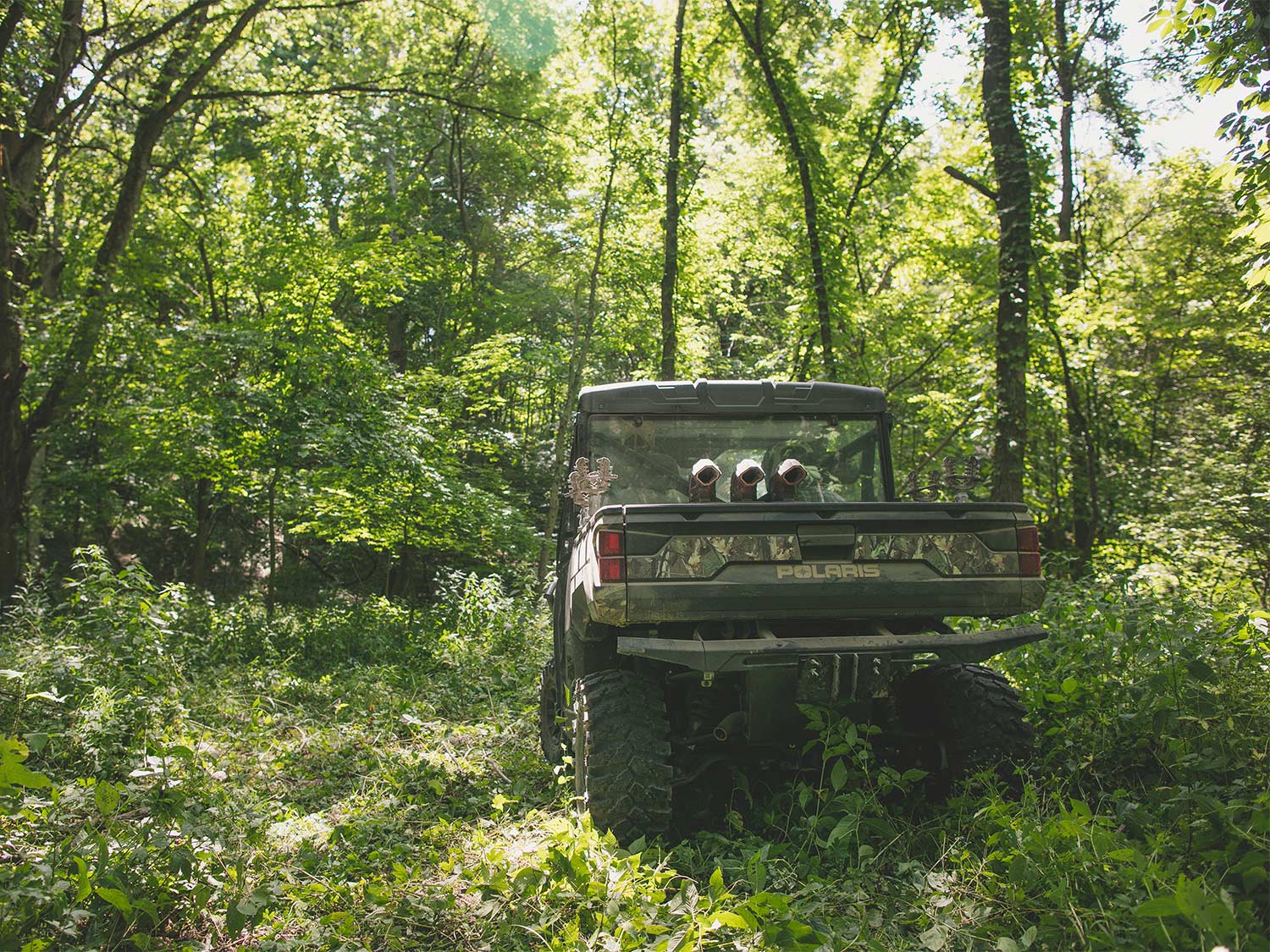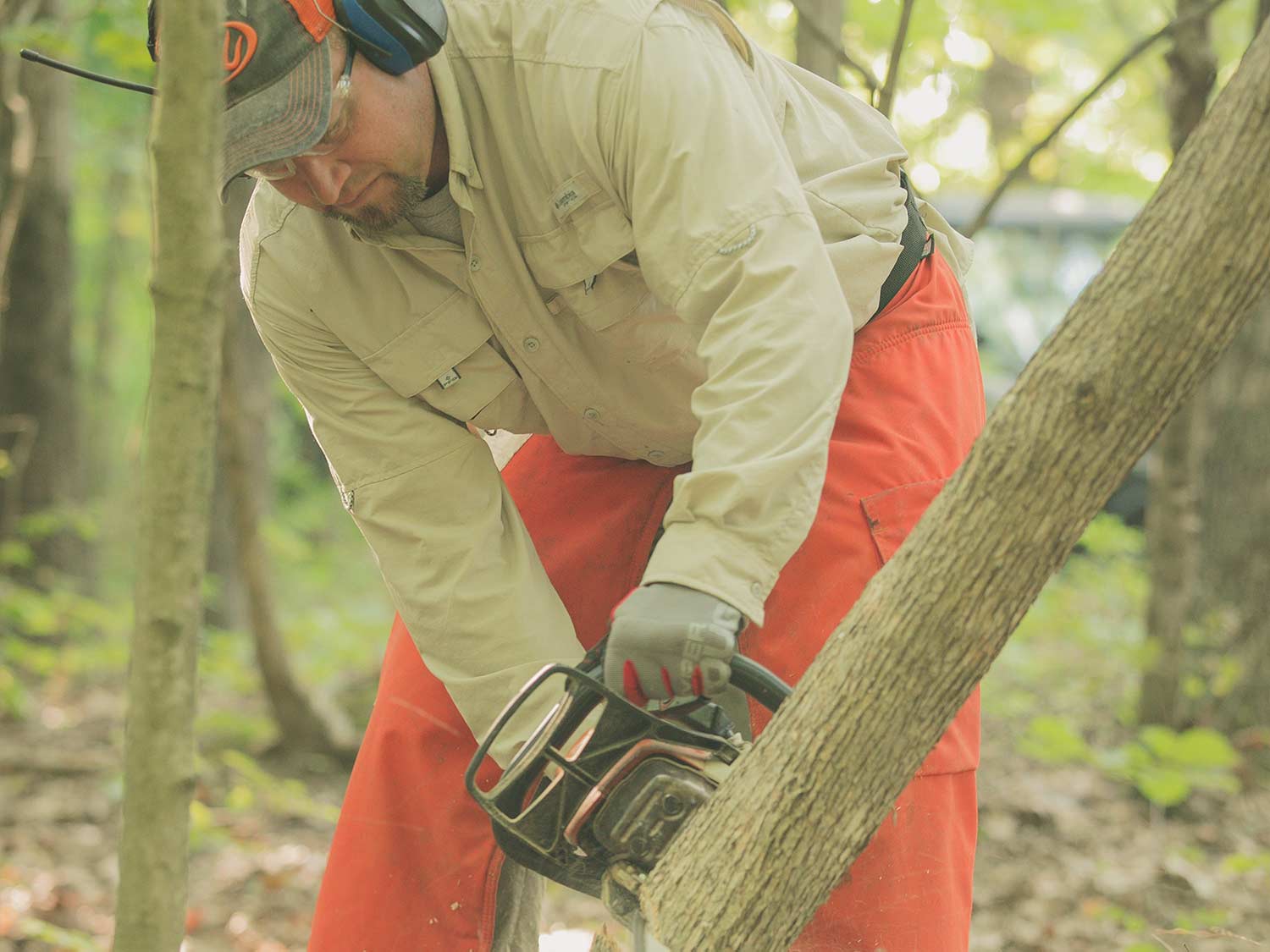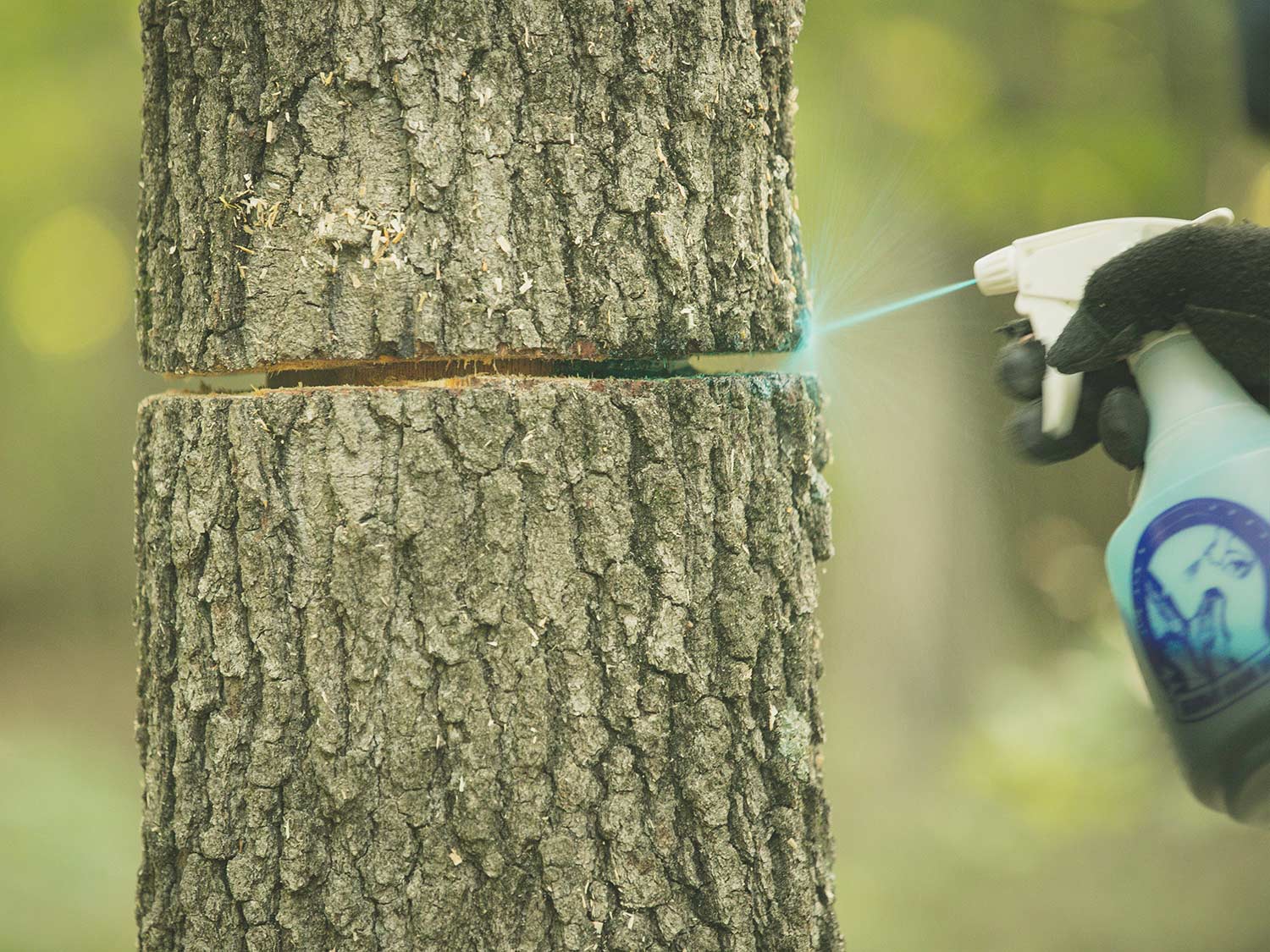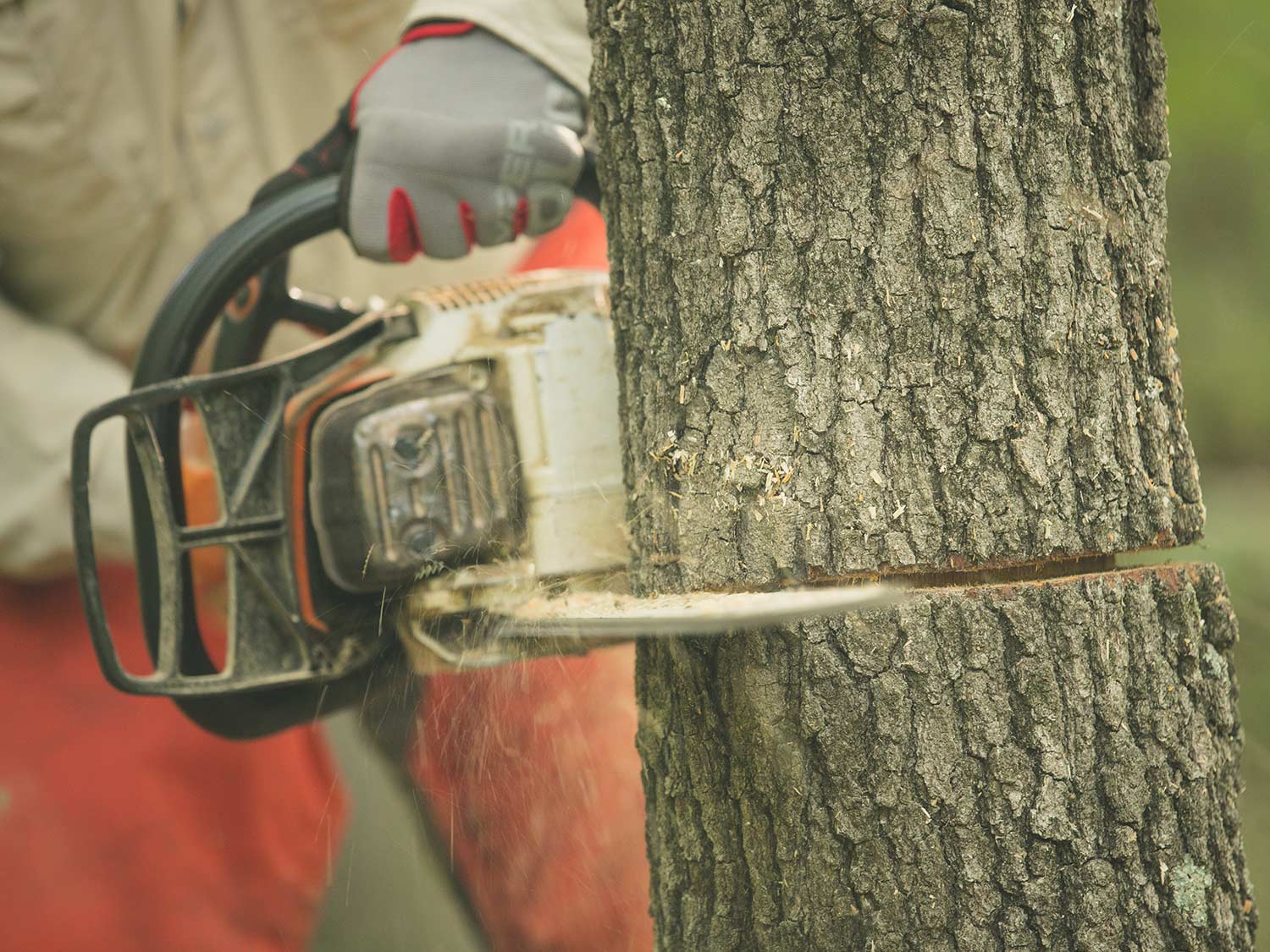Editor’s Note: This is part 8 of a 9-part Respect the Game series on habitat improvement, whitetail management, and the tradition of deer hunting. We’ve partnered with Polaris to tell the story of the world-record buck, and the group of buddies who worked together to hunt the deer last fall. Stay tuned for more tips, stories, and videos from this series.
It’s understandable. You’ve finally got a piece of hunting land, and you want to do what you can to make it as good as it can be. You plant food plots, hang stands, and monitor trail cameras. But when it comes to doing one of the most beneficial things you can do for the land—cut down some trees—you hesitate.
Felling trees can be dangerous work. There’s no denying that. But it’s not just the fear factor that keeps folks from firing up the chainsaw. There’s also the concern of doing more harm than good. How do you know which trees are simply too important to lose?

Fortunately, timber-stand improvement practices aren’t all that complicated to employ, and there’s certainly no shortage of help available to do it right. And when done right, there’s nothing that can be more beneficial to the long-term health of the habitat.
First, let’s dive into why you’d want to implement TSI on your property in the first place.
A couple years back, I invited habitat guru Jeff Sturgis to visit a small parcel of land that I had just bought. It was a great mix of habitat types and hadn’t been hunted, or manipulated in any way for a number of years. Sturgis’ first bit of advice to me? Buy a chainsaw.

“TSI is really a great way to advance a lot of different things,” he says. “We can assist with bedding cover, create browse, open area for food plots. The chainsaw is one of the most important habitat tools.”
On that particular piece of southern Michigan property, the dreaded Emerald ash borer had already done a fair bit of tree work, killing every ash tree in the woods (and all the forest land in the county, for that matter). Because of this, I had a mess of fallen and soon-to-fall trees. I also had several varieties of undesirable and invasive species to deal with. How’d I know this? Because I called in an expert: A forester. Finding one was simple. I called a county extension office and asked who they could recommend.
I would highly recommend this first step for you. A qualified forester can not only help you identify the species on your property (both good and bad), but they’ll also help recommend a TSI plan and provide invaluable tips and advice for getting the job done.
“Timber stand improvement is a pretty self-explanatory term,” Sturgis said. “We’re taking a stand of timber and improving it by removing undesirable species. This reduces competition for minerals, water, and sunlight, and better manages those trees that you want to thrive.”
Most TSI plans will call for the removal of trees. That will most likely mean young, immature trees as well as mature, sunlight-blocking specimens. The goal is to improve the growing conditions for the trees you want to keep while eliminating those that you don’t. Obviously, employing a chainsaw and cutting a tree down completely is one method. But it’s not the only one and, often, isn’t the most effective one.
Hinge-cutting is all the rage among habitat “consultants” but, in my experience hinge-cutting is a lot of hype with minimal results. The point of the practice is to cut a tree in a manner that allows it to fall over without the trunk being completely severed. This allows the tree to remain alive and create bedding cover and browse. It does work but, in reality, it doesn’t work as neatly as advertised. A better option is usually to simply remove competing tree species and allow natural regeneration to occur.
Girdling trees—a method by which you saw through the outer, growing layers of trunk—is a popular tactic employed by professional foresters because it’s effective at killing a tree but does so in a way that allows the tree to stay standing for a year or two. (Check out the video for above for an example.) While much of our focus is on whitetail habitat, we can’t forget that a whole lot of other critters live in the woods. And many of those species benefit from dead, standing timber. Girdling trees creates that habitat while also improving the growing conditions for more desirable tree species in the area.
Similar to girdling, the hack-and-squirt method is achieved by cutting gashes into the trunk of a tree and then applying herbicide into the cuts. So why would you hack-and-squirt instead of girdling or just cutting the tree down completely? That’s the question I posed to Auburn ecologist and researcher Dr. Jim Miller before embarking on my own TSI efforts.

“Sure, you can cut down some species, or girdle them and think you’ve got the problem handled,” he says. “But then those trees sprout right back up from the trunk and now you’ve got an even bigger problem. In some cases—for some species—herbicide is the best option.”
For my hack-and-squirt efforts, I used a basic hatchet and Arsenal AC herbicide. There’s not much skill involved: Chop a wedge into the tree and apply following the application directions on the herbicide label. There are a number of herbicides that can be used, but remember: your best bet is to listen to the advice of a qualified forester as to the type of herbicide for the species you’re targeting.
Once you settled on your preferred method, load your UTV with the necessary supplies and hit large sections of woods at once. It’s much easier to navigate the crowded, close-growing woods that you’re trying to improve in a side-by-side, rather than your larger truck.
The benefits of TSI aren’t always immediately apparent. It takes a couple of growing seasons for things to start to take shape. But, make no mistake: TSI is a critical part of active habitat management. Just don’t try to tackle it on your own. Call your local extension office, bring in a forester, and check out the Quality Deer Management Association’s library of TSI information. Then fire up your chainsaw and get to work.
